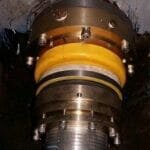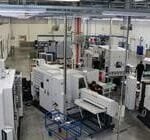By: Phil Brown, Managing Director, Fortress Technology Europe
A key cog in any food processor’s business is the performance and efficiency of production equipment. And while it seems logical to simply consider the initial cost of any machine, this is just a small part of the financial story. In fact, industry experts predict the price to be just 10-15% of the TCO equation.
Looking beyond the price tag, factoring in the expenses that may accumulate across the lifespan of equipment is paramount in today’s highly competitive food manufacturing environment.
Breaking down the various direct and indirect costs associated with inspection machinery across its lifespan is not to be taken lightly, says Phil Brown, Managing Director, Fortress Technology Europe. In fact, it can be the difference between losing essential revenue and raising profit margins long after the investment is made.
Think of it like a list to be ticked off: operational and energy costs, ongoing support, sourcing replacement parts, maintenance and repair fees, lost production time when machines are out of action, productivity and product lifecycle. All of these different factors should form part of any TCO calculation.
Don’t be fooled by false bargains
It’s completely within our nature to look at the price tag of an item. Just like we might pick out a cut-price outfit from a clothing shop, there’s a thrill attached to being frugal or buying on impulse when purchasing inspection machinery. Yet, what looks like a great deal on the surface can turn out to be a false economy.
In the same way that the seams fall apart soon after bagging that bargain outfit, in the case of food safety machinery, the same rings true. Inspecting for contaminants, including metal, is a prerequisite for brand protection. Implementing a robust food safety programme is something you can’t put a price on when quality underpins commercial success.
Short-term frugality with inspection equipment is not always worth it. Instead, try to base your decision when investing in inspection machinery on the most prevalent food safety risks. Be sure that any technical advantage will actually add value to your production line. With TCO in mind, always consider the cost of replacement parts, and keep in mind how quickly technology evolves.
In it for the long haul
TCO is lower when taking into consideration backwards compatibility – it requires a stable platform at the outset. So long as the structural inspection machine is sound and systems are designed with modularity and scalability in mind, the process of rolling out upgrades requires minimal time, investment and business disruption, compared with commissioning an entirely new build and installation.
For example, with the right maintenance, a Fortress food metal detector can run for 20+ years. Just last year, one of the first machines ever sold by the company was upgraded from an analogue metal detector with no digital controls to the current Stealth hardware platform. This legacy metal detector continues to run as efficiently as the day it was installed in 1996. However, it now has the latest hardware and software features of the Fortress Stealth.
How is it possible for Fortress’ machines to run for so long? The company operates a ‘Never Obsolete’ guarantee, meaning we can upgrade any of our customers’ machines to ensure future sustainability and compliance with HACCP and Codes of Practice. This guarantee now extends across all our new combination, x-ray and checkweighing systems built in collaboration with Sparc Systems.
Pulling the plug on parts
For some inspection machines, part obsolescence is when the real drain on finances can start to bite back. It can be a shock to a food supplier each time a new model launches and the prices of spares increases. Food manufacturers subsequently find themselves at a money pit tipping point. Modernise or stick with legacy equipment?
Ask your supplier to be upfront about replacement part costs. If they’re not prepared to provide these, that’s a big red flag. Realistically, a Fortress metal detector will probably require two replacement boards at most in its lifetime – most only one. To give a benchmark, ours costs around £750. Also, ask to see data on machine failure rates. If these aren’t available, word of mouth business recommendations are also reliable.
All Fortress machines are designed to be backward compatible. The electronic boards are interchangeable, which means customers can hold just one spare in stock. Or they can simply swap a board out from another machine while waiting for a replacement to be delivered. We aim to make it as simple and cost effective as possible for clients to upgrade and maintain their machinery to optimise TCO.
Avoiding profits down the drain
For many manufacturers, downtime is a significant drain on profit. Every product that comes off the line after processing and inspection has value. If a production line is put to a halt, this seriously hinders a company’s ability to reach profitable production levels.
Unplanned downtime in particular is the biggest dilemma. While no value is being produced, operational overhead costs continue to grow, which directly impacts the bottom line.
What’s one of the leading causes of this issue? Equipment failure. According to research conducted by OneServe in partnership with British manufacturers[i], unplanned downtime causes roughly 3% of all working days lost annually in manufacturing due to faulty machinery. This equates to 49 hours of work and £31,000 per company. What’s more, approximately 53% of machinery downtime is caused by hidden internal faults. For mass food manufacturers of all sizes, losses of this scale can rapidly make or break a business.
Equipment that’s poorly maintained will likely breakdown more frequently. This impacts quality, as well as productivity and Overall Equipment Effectiveness (OEE). Adopting a ‘run to failure’ method is risky.
Rather than reacting to emergency tasks, Fortress recommends customers perform an annual preventative maintenance check. Many global customers sign up to this service check. Additionally, carrying out relatively straightforward maintenance – such as regular visual checks on the conveyor and monitoring the lubrication levels – can make a big difference to a system’s running costs.
In the event of a breakdown, remote assistance and access to a 24/7 hotline can help to troubleshoot issues faster. Where a call-out is required, having access to local support teams means a Fortress engineer can be on-site within 24-hours. Peace of mind for any supplier who doesn’t want to become part of the aforementioned statistics.
Avoiding human errors
Equipment failure is, of course, just one part of the problem. Operator mistakes are the second largest cause of unplanned machine downtime. Stepping up training protocols doesn’t just teach production operators to recognise and repair their own equipment. It also shows them how to properly operate and calibrate the machinery, therefore cutting down on issues from happening in the first place. Quick learning features, multi-lingual control panels with shortcut keys and automatic calibration saves time and costs by avoiding false production starts.
Regardless of how up-to-date food inspection systems are, human error and misuse can never be completely ruled out by machines. It’s essential that robust procedures and practices are in place and that staff members clearly understand their roles and responsibilities. Make good use of what training suppliers offer to build awareness of food safety risks and improve understanding of equipment among operatives.
Another notable benefit of a Fortress upgrade is no additional operative training is required – the menu and functional set up look and feel the same, making it simple to use.
Automatic test technology – such as Halo – can also save significant time and labour resources. Rather than just performing manual checks (which honestly returns modest investment), Halo can slash the time during which a problem with a metal detector can go undetected. This can reduce the number of suspect products that must be discarded or recalled in case of an incident, saving more money in the process.
Debunking the legacy TCO myths
Yes, it’s true; some may argue that legacy equipment has had its day. However, Fortress believes that providing the base unit is in good working order, they can be updated with the very latest technology to optimise TCO.
As a testament to how robust these metal detectors are, one Fortress metal detector continued to live another day after being engulfed in a fire at a Canadian lumber unit. Another in Brazil was in good working order after being fully submerged in water.
Fortress lives by the ethos If it ain’t broke, don’t fix it. Given that the company recently celebrated its 20th anniversary in Europe, and with many of the original machines still in good working condition today, this TCO business formula certainly continues to stand the test of time.
[i] https://www.oneserve.co.uk/whitepapers/infographic-staggering-cost-machine-downtime/





